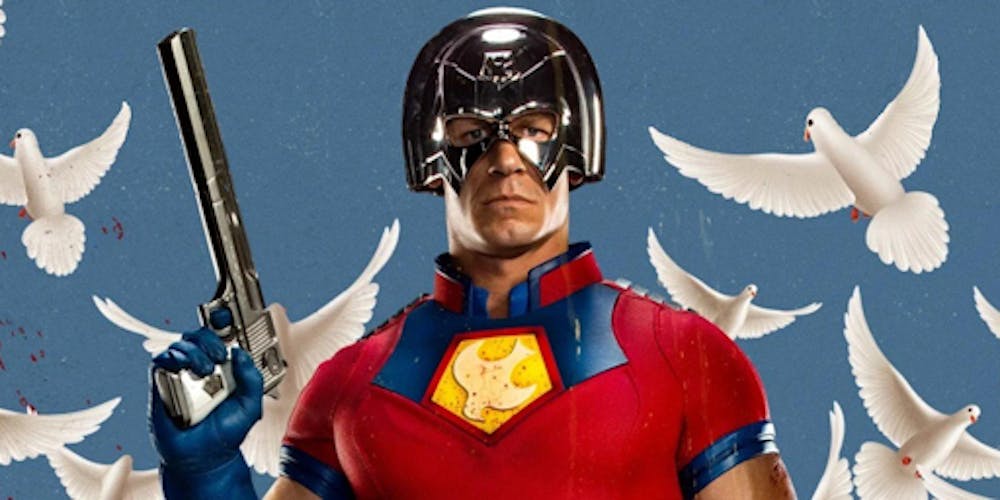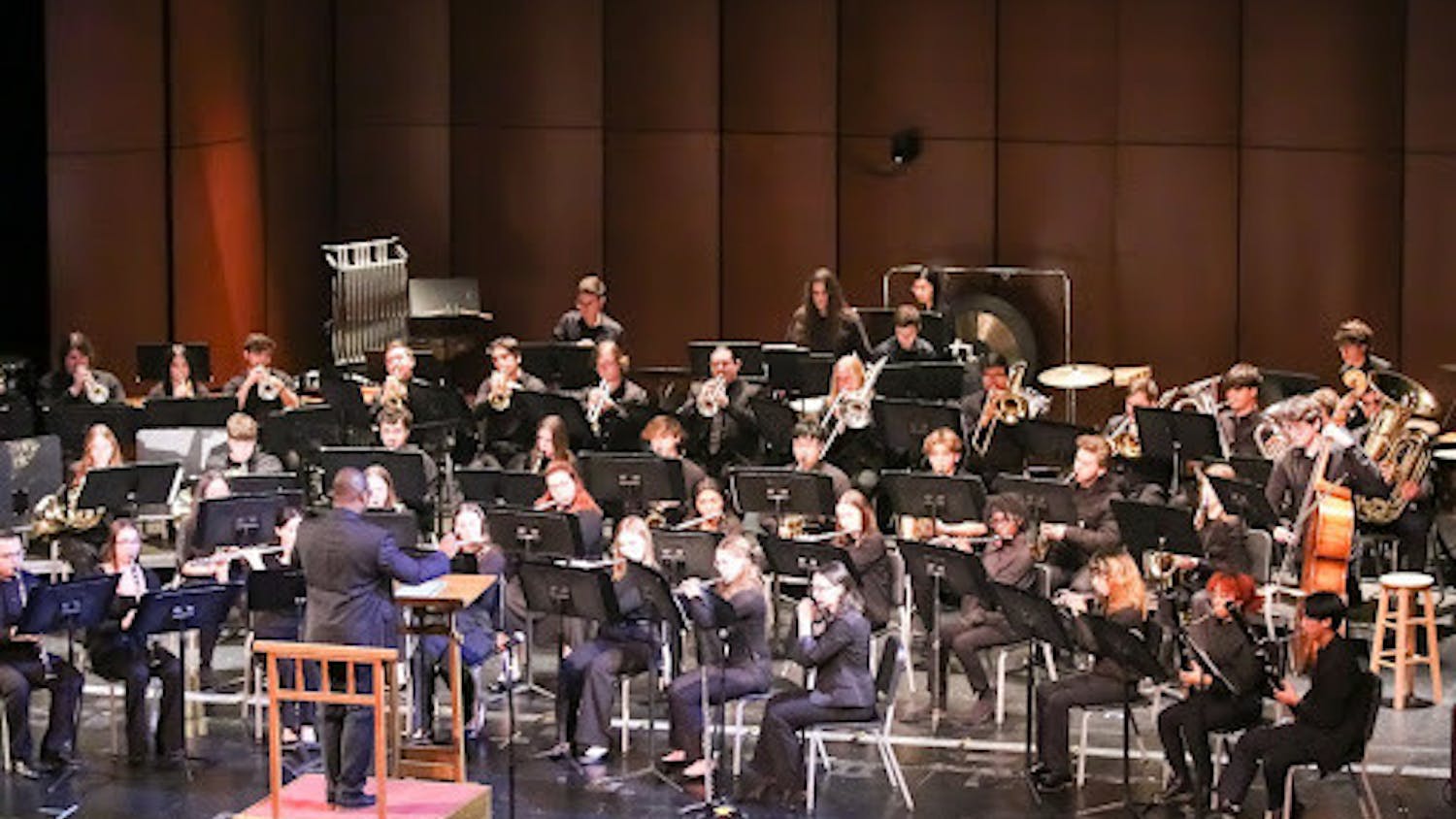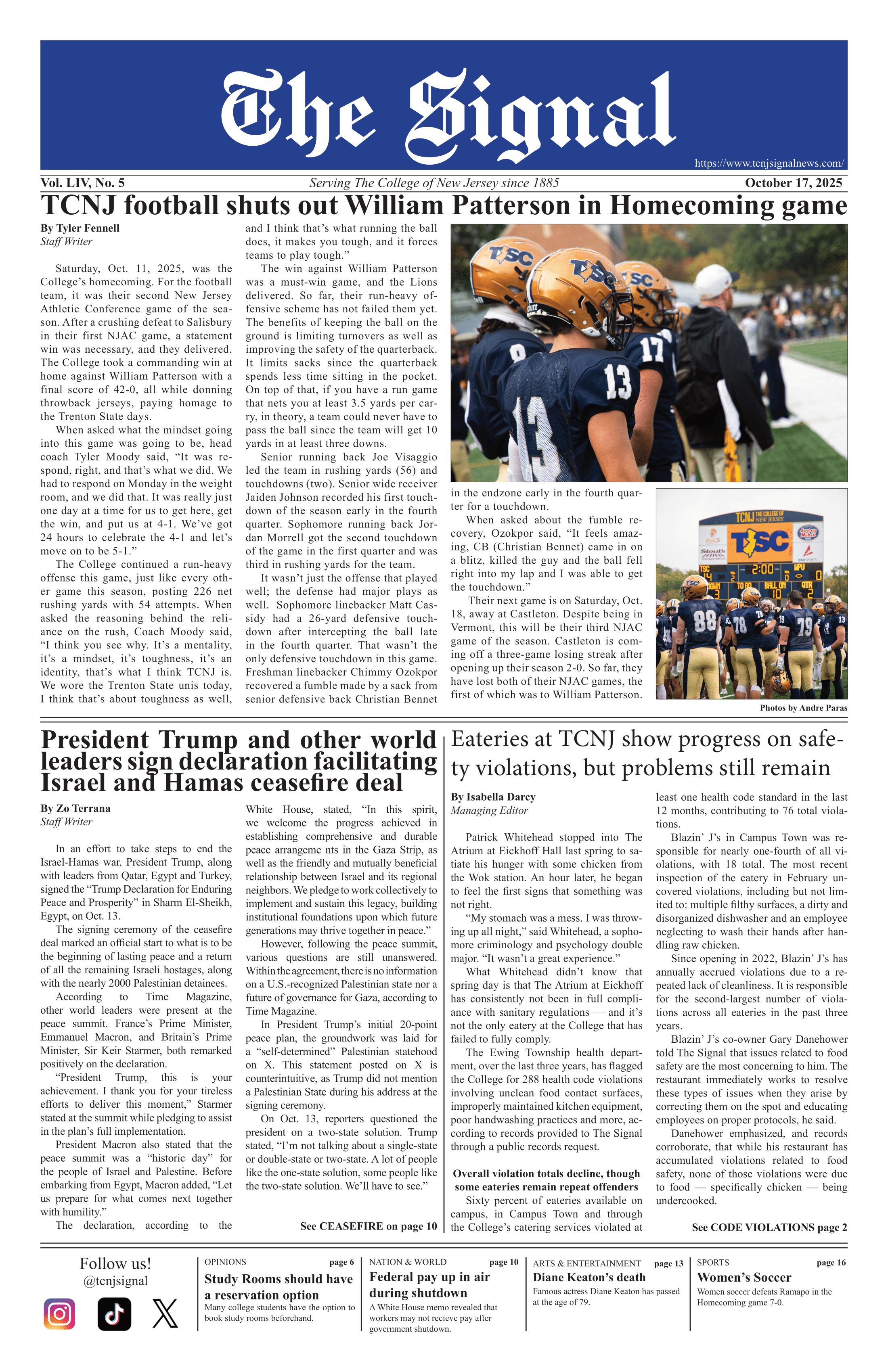By Michael McKee
Correspondent
When James Gunn made “The Suicide Squad,” John Cena captured the imaginations of the superhero fandom with his role as the film’s egotistical and violent supporting antagonist, Christopher Smith aka Peacemaker.
When Warner Bros. allowed Gunn to make a spin-off TV show about any character from the film, Gunn surprised everyone when he chose to bring back Cena’s character to explore a new storyline.
The first season of “Peacemaker” explored Smith's violent upbringing by his abusive and racist father, Auggie aka White Dragon, which resulted in him accidentally killing his brother Keith when he was just a child.
During the season, Smith teams up with Adrian “Vigilante” Chase, a local masked maniac who looks up to him, as well as a trio of government agents: the hard-nosed and aggressive professional Emilia Harcourt, the curmudgeonly and asocial tech geek John Economos and the big-hearted and inexperienced nepo-baby Leota Adebayo. Together they form the 11th Street Kids, who face threats such as body-stealing aliens known as the Butterflies and their henchman Judomaster, as well as the return of the White Dragon, whom Peacemaker is forced to kill.
Smith is dispirited from his rejection by other heroes and the status of his relationship with Harcourt when he discovers an alternate universe where his father and brother are still alive, have loving familial relationships with him and are celebrated as heroes.
Meanwhile, General Rick Flag Sr. is planning revenge on Smith for the murder of his son, with a trio of government agents at his disposal: cold and professional cyborg Sasha Bordeaux, wisecracking oddball Langston Fleury, and the aforementioned martial artist Judomaster.
The second season involves a more slow-paced and emotional exploration of Christopher Smith’s character and takes its time to explore the emotional aspects of the story, which can be a welcome change from other superhero fare.
Cena delivers the standout performance of the season, really putting his acting chops to good use by portraying his yearning for deeper connections and his deep-seated pain.
The comedic acting in “Peacemaker” remains top-notch, with great comedic performances from Danielle Brookes as Adebayo, Freddie Stroma as Vigilante, Steve Agee as Economos and Tim Meadows as Fleury. All of these actors also have great dramatic moments, especially Brookes, who does a great job of exploring Adebayo’s fractured relationship with her ex-wife Keeya and her friendship with Peacemaker.
Jennifer Holland, who plays Harcourt, does a great job of helping the audience understand a character that can be hard to sympathize with, while simultaneously playing the bubbly and feminine alternate universe version of herself. Also of note are the performances of Robert Patrick as the alternate universe Auggie Smith aka Blue Dragon and Frank Grillo as Rick Flag Sr.
Like most of his projects, Gunn heavily inserts his musical tastes throughout the show, including Foxy Shazam’s excellent 2010 song “Oh Lord,” which is sure to get stuck in any viewer's head and is played during the season’s immaculately choreographed title sequence.
One of the season’s biggest attention-getters is its divisive finale, which rocked the internet and comic fandom after its release. A lot of that negative attention comes from the way Gunn promoted the episode prior to its release, which got fans to think it would be a big event with major fights and cameos from big DC superheroes.
When the episode was instead a slower exploration of the characters, fans felt understandably misled. Had Gunn described the finale as an epilogue that resolves the emotional arcs while setting future plot points, there would have been less backlash.
While Gunn’s promotion of the episode was less than ideal, criticism of how the episode is built up is fundamentally different from criticism of the episode itself, and so it should be analyzed within its proper context.
While the backlash to the eighth and final episode is overblown, there are things to criticize about it as well as the season as a whole. An emotional disconnect between Peacemaker and Vigilante is set up, but not given a significant resolution in the finale. Adebayo is given a scene with Keeya that resolves their subplot. However, Keeya’s problems are not resolved even though the main characters have the means to do so.
Many of the episodes are much shorter than usual, so there is less to devote to characters like Vigilante. The arcs of Flag Sr., Fleury, Bordeaux and Judomaster don’t feel significantly built up to justify where they end up in the finale, to the point where it feels like scenes developing them are missing.
If there were more time devoted to fleshing out their arcs, then the endpoints for their arcs would make more sense. Also, from a nerd perspective, it is disappointing that Peacemaker didn’t make better use of his iconic weaponry, such as his helmets and new motorcycle.
So far, Gunn has confirmed that Season 2 will be the last season for now, with the ongoing plot points to be continued in the “Waller” spin-off series and the film “Man of Tomorrow.” While still far from a perfect season of television, “Peacemaker” Season 2 is still a suitable viewing experience for comic fans and TV buffs alike, as long as they keep their expectations in check.







